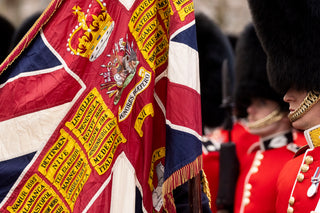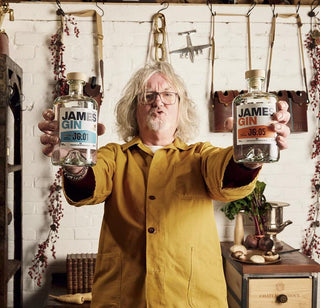

BACKGROUND
FOUNDERS
Forged in Duty, Distilled with Honour – A Scots Guardsmen’s Spirit.
Downton Distillery was founded by Hugh Anderson and Charles Andrews, together with friends, at Downton Manor House. The Downton Manor House is a Grade I listed building that is said to be one of the longest inhabited houses in the South of England. The Manor House became a valued centre of England in 1830, when it belonged to the Bishop of Winchester, William of Wykeham. It remained the residence of his successors until its lease for grace and favour to Queen Elizabeth I in 1560. She would later gift the Manor House to her favourite rising star of the Royal Court, Sir Walter Raleigh.
Having been gifted Downton Manor House, Raleigh set to charm Queen Elizabeth to pursue his dreams of colonizing the new world, which we know today as America. Raleigh invited her to stay, but not before having made significant improvements to the property: from the Raleigh coat of arms, still standing above the household fireplace, to the addition of a first floor, created from a ship which Raleigh had sailed up the River Avon. His efforts proved fruitful and in 1584, he was granted patent to explore and settle America, now Virginia.
Today, the spirit of exploration and tradition continues at Downton Distillery blending historic roots with modern craft.
Downton Distillery was originally born in the Grade 1 listed barn, adjacent to Downton Manor. The barn also has an old ship beam across its width, one of those that did not get used within the Manor. The barn, once used as a carriage shed, was given a new lease of life as a distillery. Explorer’s Gin took over a year to create. Our spirit is macerated and then vapour-infused using the one-shot method. We uphold the traditions of past distillers but believe being bold with flavours, creating something unique and characterful. There are no shortcuts, and everything is done by our own hands. Our labour-intensive process leads to a distinguished gin of quality.
THE OLD MANOR HOUSE & DISTILLERY
England’s Golden Age of Exploration
Many nations refer to a "golden era" of growth and prosperity—for England, this was the Elizabethan Era (1558–1603). Before this time, most English trade was conducted overland and focused on Europe. The country’s economy was heavily reliant on the cloth trade, which had been England’s primary export for centuries.
However, in the 1550s, the cloth trade collapsed. English merchants suddenly found themselves in need of new markets for their goods and new luxury products to import—such as spices, silks, and exotic goods from Asia. These valuable items reached England via long and costly overland trade routes, controlled by foreign middlemen, particularly those within what would become the Ottoman Empire. These intermediaries restricted access and inflated prices, creating a dependency England sought to break.
Recognising this challenge, Queen Elizabeth I understood that England’s future strength lay not on land, but at sea. To build a new era of prosperity, she encouraged naval exploration and backed English merchants and adventurers to forge direct trade routes with distant lands.
This maritime expansion was made possible by several key innovations:
- The magnetic compass, allowing for more accurate sea travel.
- Fast, light ships that could catch the wind more effectively and handle long ocean voyages.
- Gunpowder and new weaponry making English ships formidable in battle.
Many of Elizabeth’s explorers were not only traders but also privateers—state-sanctioned pirates who targeted Spanish ships returning from South America with gold and treasure. This tactic had a dual purpose: to weaken Spanish dominance and to enrich the English treasury.
This era laid the foundations for England’s future as a global naval and trading power—and marked the transition from a European-bound nation to a far-reaching maritime empire.













